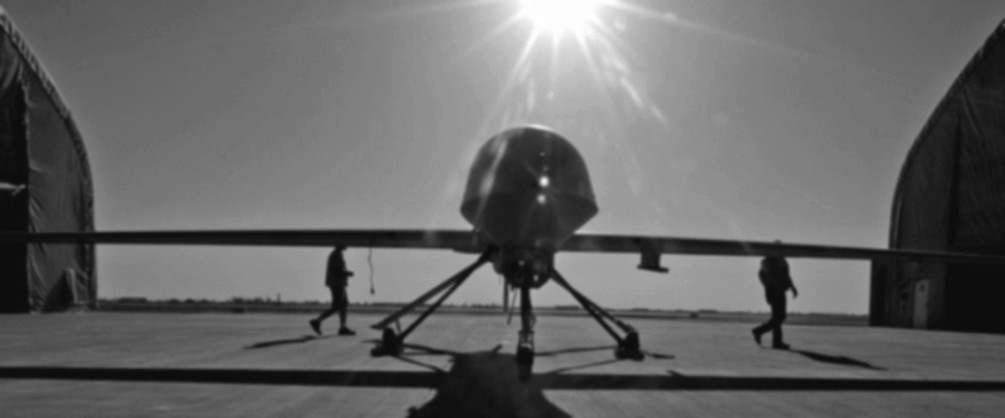It took a long time coming, but John Brennan, the United States’ counter-terrorism chief, finally confirmed what was essentially Washington’s worst kept secret – the US has been using armed drones to kill terrorists.
“Let me say it as simply as I can. Yes, in full accordance with the law, and in order to prevent terrorist attacks on the United States and to save American lives, the United States government conducts targeted strikes against specific al-Qaeda terrorists, sometimes using remotely piloted aircraft, often referred to publicly as drones,” he said in a speech at the Washington-based Woodrow Wilson International Centre for Scholars.
US drone strikes were “legal, ethical and wise”, he stressed. The US held itself to “rigorous standards and a process of review” when considering strikes against al-Qaeda suspects. Analysts have lauded Brennan’s candid comments, which come in the wake of similar clarifications by other senior US officials.
The US has reaped manifold benefits from operating drones in countries such as Afghanistan and Pakistan. Such armed aircraft are able to stay aloft for hours, and pose little risk as soldiers and pilots are not put in harm’s way. But many analysts question the legality of using armed drones to attack terrorists. Brennan’s speech still leaves several questions unanswered.
He side-stepped questions about Washington’s increasing dependence on “signature strikes’, which allow the Central Intelligence Agency (CIA) to fire missiles even if it cannot ascertain the identities of those being targeted. His emphasis on the US’ preference for capturing terrorists does not gel with the high kill count of such terrorists over the years.
But the bigger problem lies with the CIA, and specifically whether it adheres to the laws of armed conflict (LOAC) when conducting drone attacks. It is now understood that there are two drone programmes – a public one run by the US military, reportedly with CIA participation, and a classified one run by civilians at the CIA. It has been reported that most drone strikes are conducted by the CIA, as it can act more quickly on the intelligence it receives. It is generally accepted that in conducting drone strikes, the US military adheres to LOAC, which has established principles such as proportionality, necessity and distinction.
Proportionality refers to the idea that the expected collateral damage – a euphemism for civilian deaths – of an action cannot be excessive in relation to the anticipated military utility. Necessity is the requirement that a target must have some tangible military utility. Distinction refers to the idea that only military targets can be marked, not civilians. The critical question here is whether the CIA, a civilian agency, adheres to the LOAC. Brennan did not answer that.
Notre Dame University law professor Mary O’Connell argues that the CIA is not bound by US military law. This became clear some years ago, when it was revealed that CIA staff were using unauthorised torture methods. “Given the impact of that unlawful conduct it is difficult to fathom why the Obama administration is using the CIA to carry out drone attacks,” she writes.
Even if the CIA drone strikes adhere to LOAC principles of proportionality, necessity and distinction, it is hard to fathom how such principles are at work in the case of certain civilian deaths. Research done by the London-based Bureau of Investigative Journalism (BIJ) shows that between 282 and 535 civilians have been killed by drone strikes since US President Barack Obama took office in 2009. This includes more than 60 children.
At least 50 civilians were killed in follow-up strikes when they went to help victims killed by drones. More than 20 civilians were attacked in deliberate strikes on funerals. If confirmed, the BIJ findings warp the logic of proportionality, says Dr Dopa Akande, a lecturer in international law at Oxford University.
“That’s the problem with proportionality. It’s amorphous and vague. The bigger military advantage you’re going to get from targeting a person, the more collateral damage is allowed,” he adds. Even if the US can offer a watertight legal case for using drones, the truth is that the use of military means alone will not achieve political goals. For example, targeted killings have provoked anger among Pakistanis and given the Taleban the moral ground to retaliate against Americans.
Writing in the New York Times in 2009, David Kilcullen and Andrew Exum – former army officers from Australia and the US respectively – argued that each dead noncombatant represents “an alienated family, a new desire for revenge, and more recruits for a militant movement that has grown exponentially even as drone strikes have increased”.
The US needs to lead here. As Brennan has said, if the US wants other nations to use drone technologies responsibly, it must do so first. If the relatives of terrorists can be targeted in a US drone strike, what is to prevent other countries from attacking the family members of US drone pilots? In the end, drones might provide a military solution from above, but they might create more political problems on the ground.










